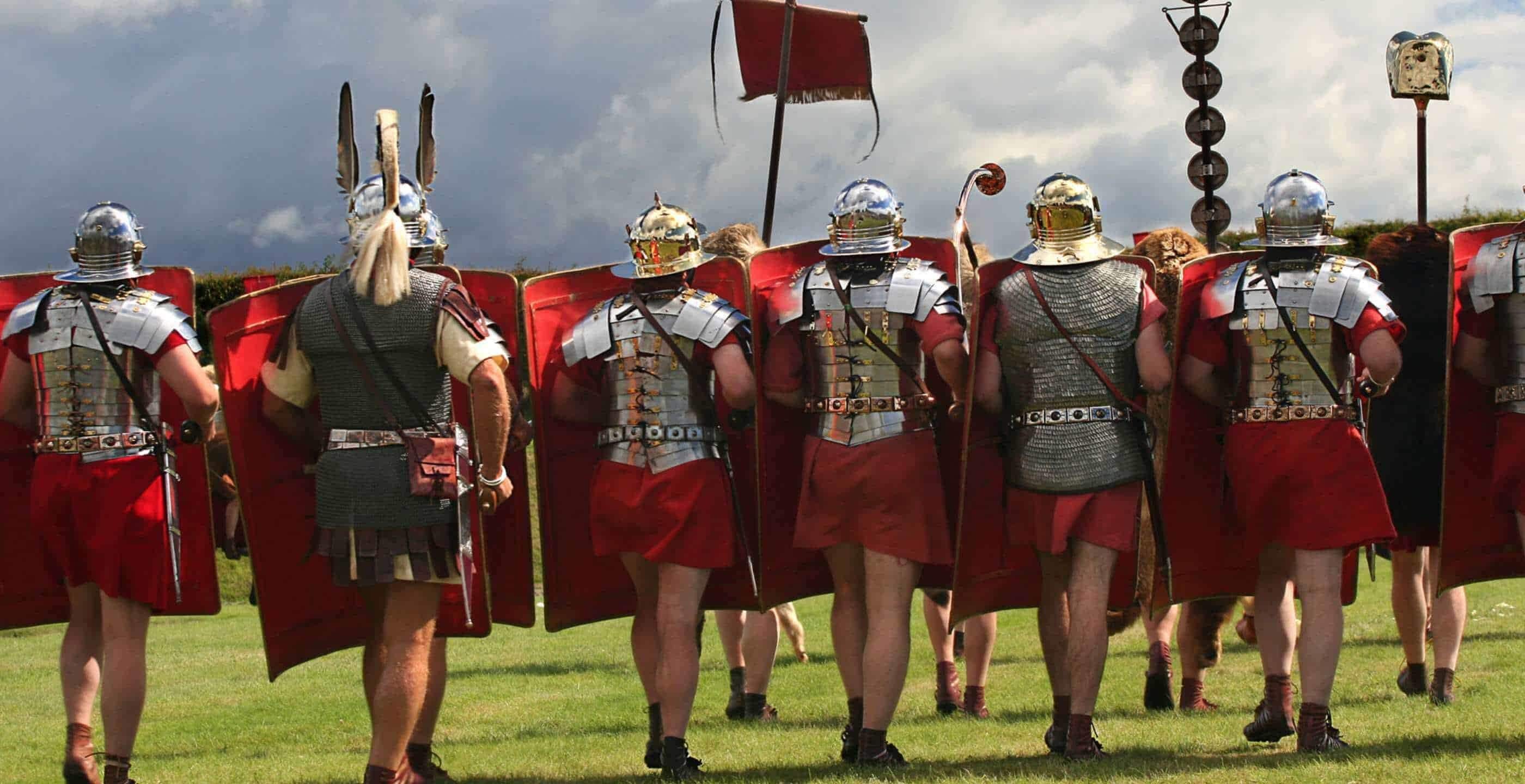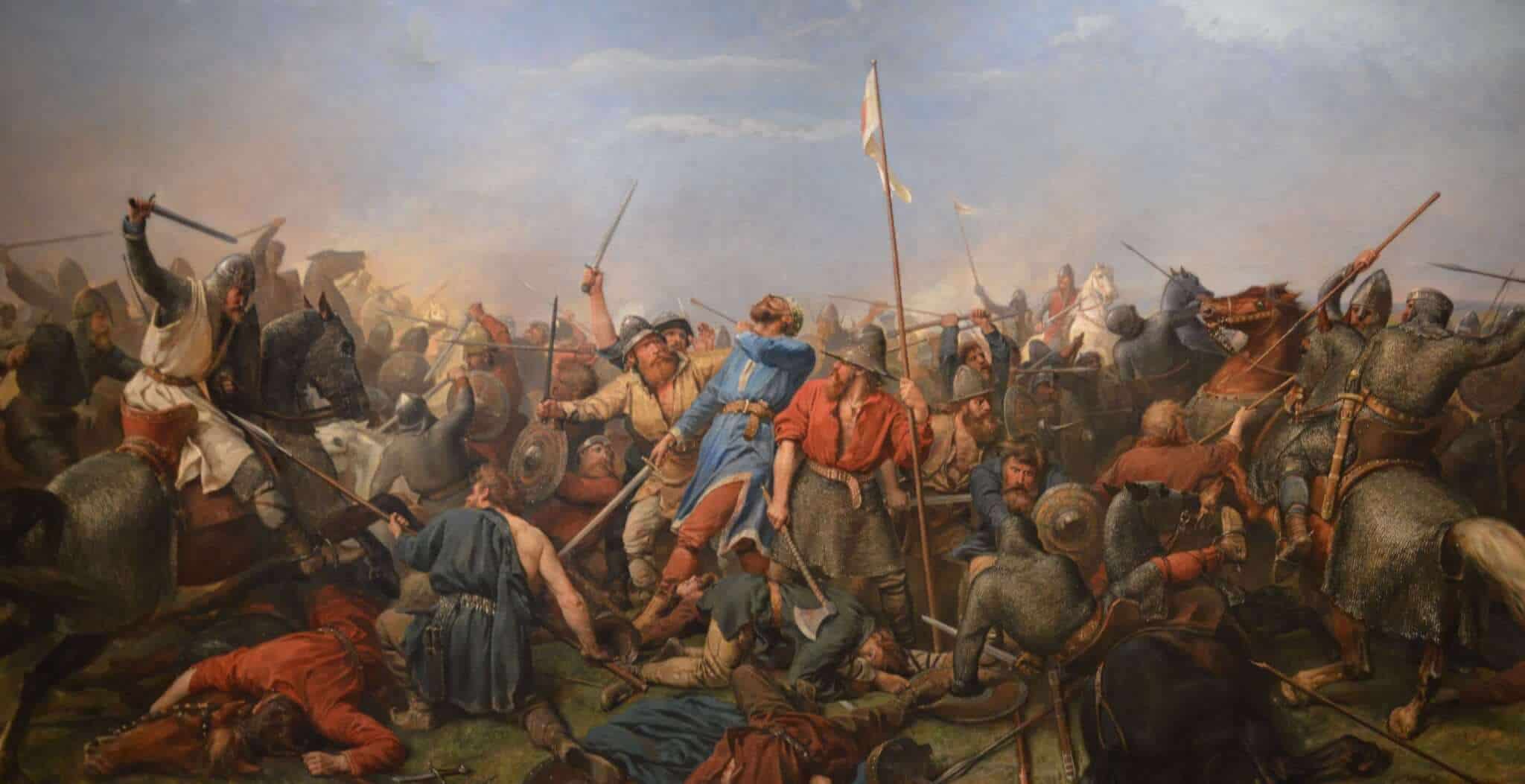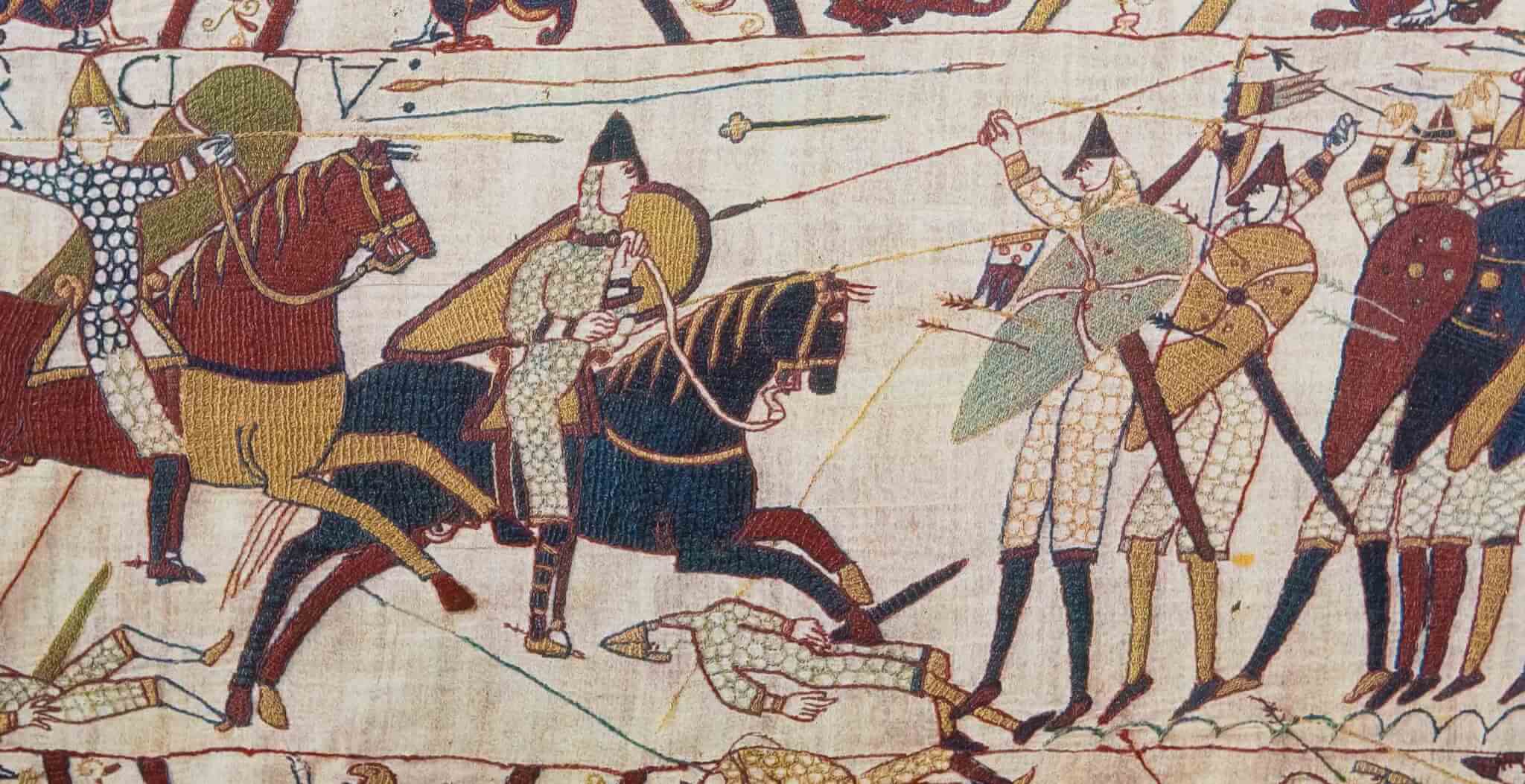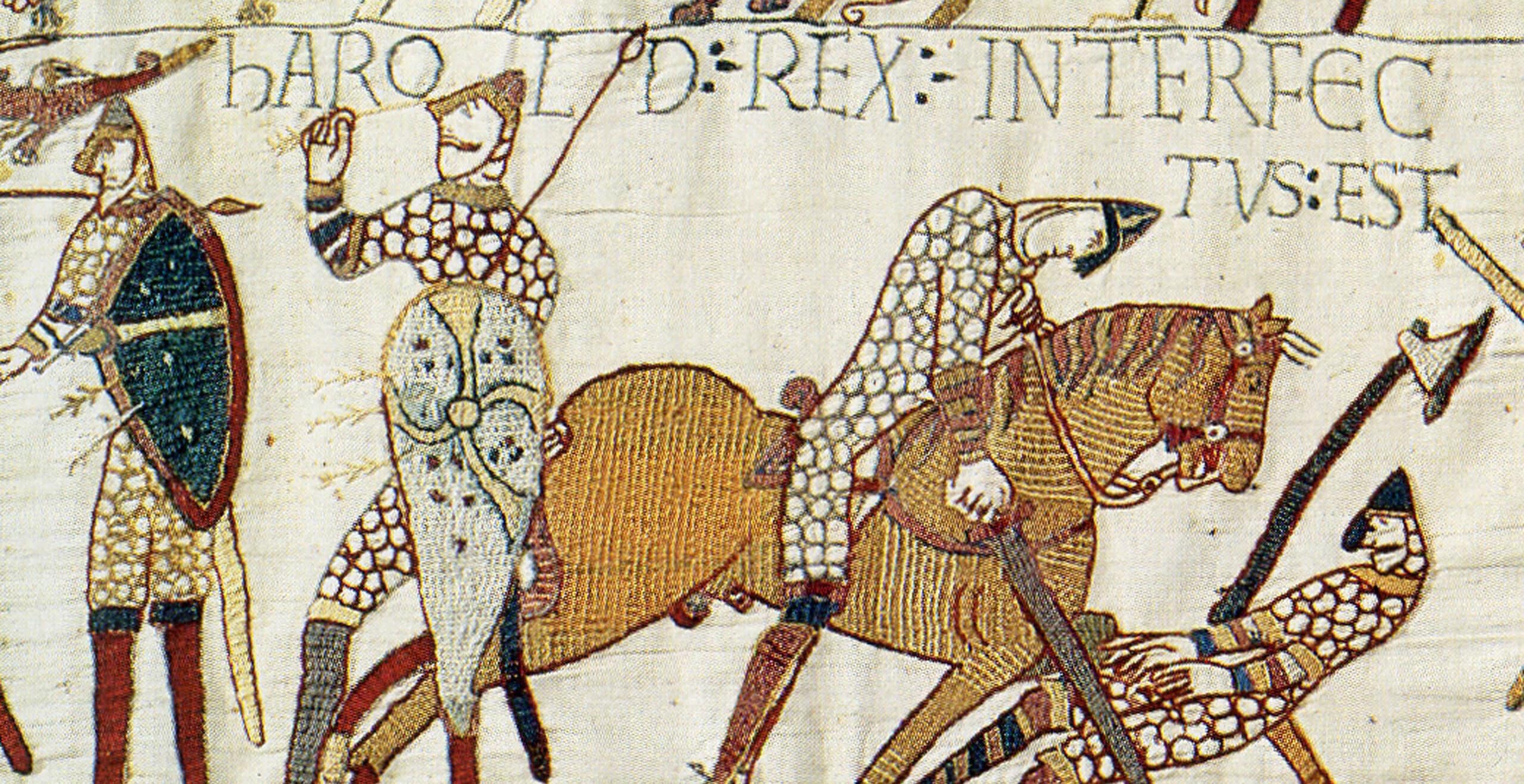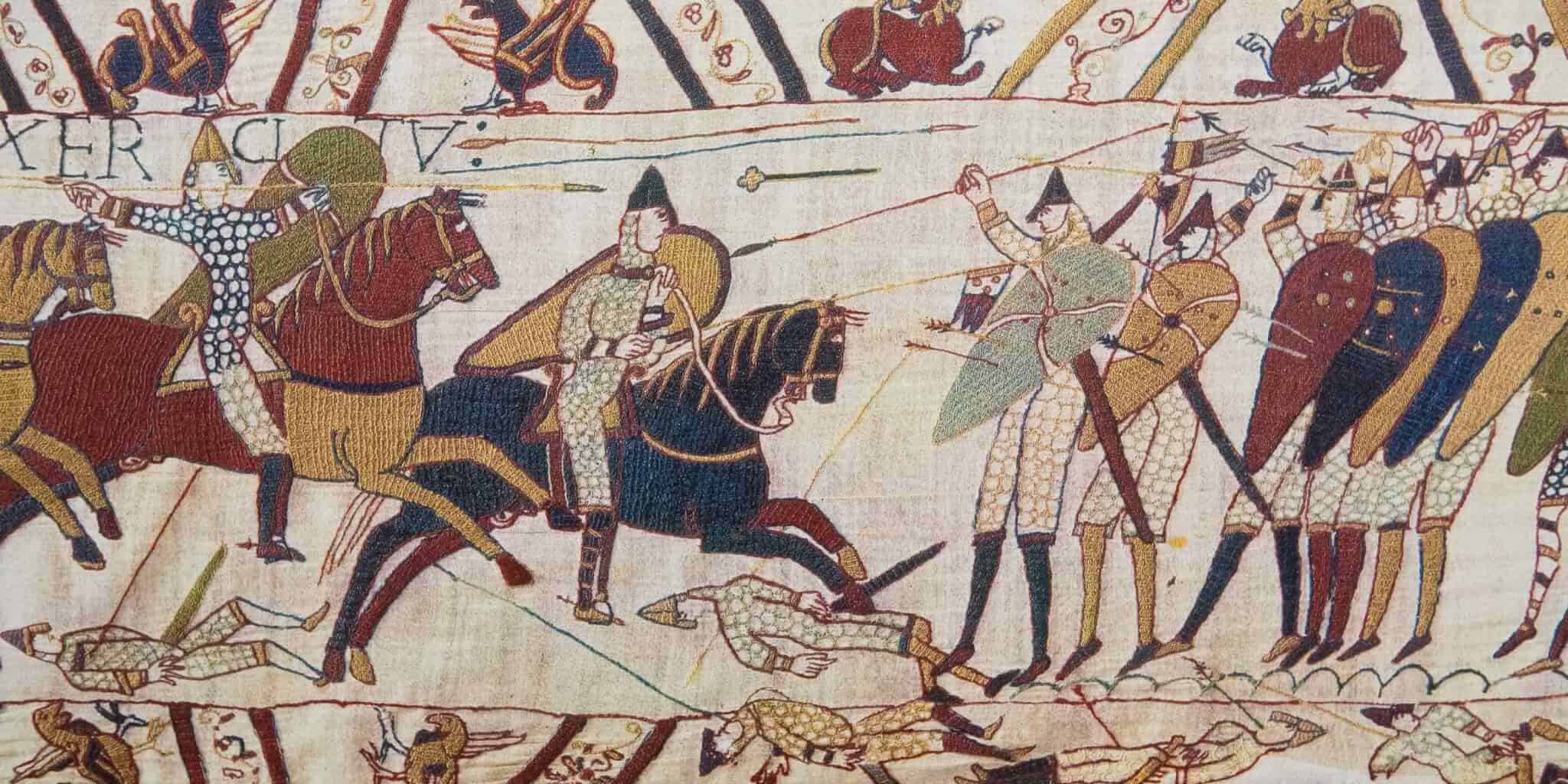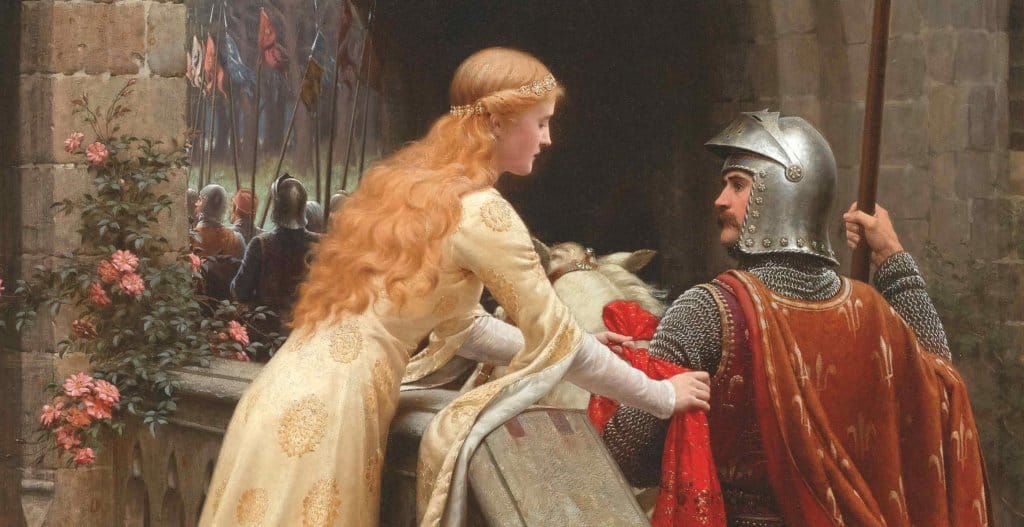Welcome to Part One of our Arms and Armour series. Starting with the Ancient Britons, this section covers armour and weapons through the Iron Age, Roman era, Dark Ages, Saxons and Vikings, up to the Norman Conquest in 1066.
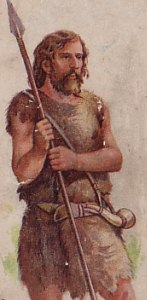 |
An Ancient British warrior at the time of Julius Caesar’s invasion in 55BC.
The weapons of the early Britons were very primitive compared to those of the Romans. Their use of chariots in warfare was however a surprise for the invaders! Although they had swords, axes and knives, the spear was their chief weapon. They had little defensive armour and, according to Caesar, were “clad in skins”. Herodian, the Roman writer said, “They know not the use of a breast-plate and helmet, and imagine these would be an impediment to them.” |
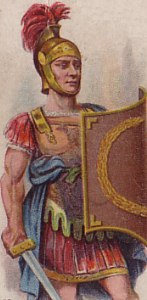 |
A Roman Soldier at the time of Julius Caesar’s invasion in 55BC.
The Roman Infantry were at this time the best equipped and most disciplined troops in the world. They wore tunics of wool reaching to the knees, strengthened with bands of brass over the shoulders and round the chest. The short, two edged sword (gladius) was used for both thrusting and cutting. The scutum or shield was of wood, covered with leather and bound with metal, and was usually ornamented with some distinctive design. |
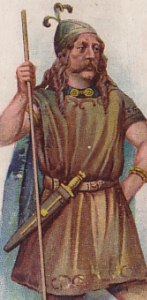 |
British Chieftain at the time of Boudica, 61 AD
By this time the art of spinning coarse cloth had been introduced to Britain. This woollen cloth was dyed various colours using herbs, the blue extracted from woad being particluarly popular. The tunic, mantle and loose pantaloons were made from this coarse cloth, while the shoes were made of raw cowhide. Ornamental bracelets and torcs made from twisted gold wire were often worn. |
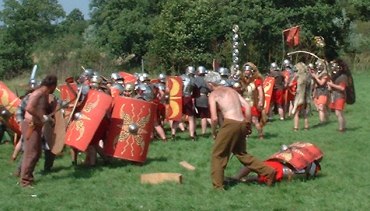
Battle re-enactment between the Romans and Boudicca’s Iceni.
(EH Festival of History)
Note how the Roman shields have became curved and longer, in order to hug the body and better protect the soldier.
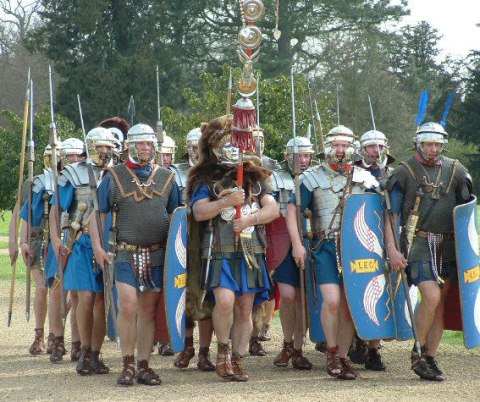
Here you can see in more detail the later Roman armour and weaponry. Note the helmet or cassis. As well as cheek protectors, the helmet has a guard to protect the back of the neck and a ridge running along the front of the helmet to protect the head from sword blows. As well as the sword the soldiers are also carrying a spear (pilum) and a dagger (pugio). Roman boots were made from leather and studded with hobnails. Body armour was made from overlapping metal strips held together by leather strips on the inside, and hinged to allow the soldier to move more easily. Under the armour the soldier would wear a linen undershirt and a wool tunic.
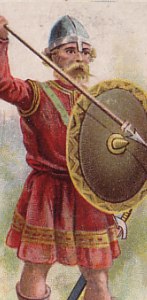 |
Saxon Warrior c. 787AD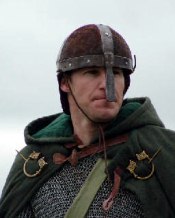
The Saxon warrior’s main weapon was his lance (angon), an oval shield (targan) and his sword. The conical helmet was made of leather over a framework of iron, with a nasal or nose-guard. |
Shield bosses are commonly found in early Anglo-Saxon cemeteries but helmets and items of body armour are exceptionally rare.
The Sutton Hoo ship burial (7th century) is an exception and includes not only the famous helmet, sword and shield, but also a mail-coat which was so rusted it could not be restored.
Armour was very precious so it was probably passed down through the family rather like an heirloom would be today.
Indeed by its design, the Sutton Hoo helmet may well have dated from the 4th century Roman era rather then the 7th century.
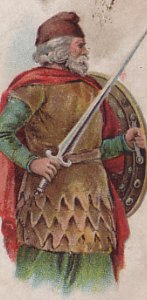 |
Saxon warrior in around 869AD (time of King Edmund)
The warrior (left) is wearing a tunic with a cuirass of leather over it, a conical cap and a long cloak fastened with a brooch on the shoulder. He carries a shield, probably made of linden wood, bound and riveted with iron, and a sword. The handle of the iron sword is decorated with gold or silver, and the blade of the sword is about 1 metre in length.
|
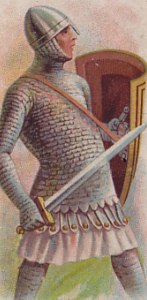 |
Norman soldier around 1095AD
This soldier is wearing scale armour, made from silvered horn. Scale armour was also made from leather or metal. The shield is of an oblong shape, broad at the top and coming to a point. The shield is curved to protect the soldier and is highly polished in order to dazzle an attacker. |
